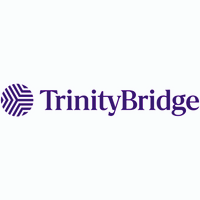Financial education: how do you like your eggs?

In the first instalment of this three-part series, we looked at ‘want’ and ‘need’ as powerful drivers for financial education, particularly at the beginning and towards the end of employees’ working lives.
Getting individuals to a place when they are motivated to take better control of their finances is a great achievement – but also just the start. The second step is about delivering the right content, in the right way, at the right time to help employees capitalise on that enthusiasm.
Our previous article also looked at educator Phil Race’s adult learning ‘ripple effect’ in which want and need are the starting point for ‘doing’ (practice, repetition and experience), ‘feedback’ (other people’s reactions), ‘making sense’ (understanding what has been learned), ‘verbalising’ (being able to explain to others what you’ve learned), and ‘assessing’ (making informed judgments based on that learning).
Applying those ripples in workplace financial education, so that staff get the skills they need to make a real difference to their financial wellbeing, is not a one-size-fits-all task. Employees will have varied starting points in terms of their financial background, experience, life stage and what they want to learn – as well as their own preferences for how they learn it.
Work with a mix of learning formats
Different people absorb information in different ways. Simply putting text information on the intranet or in a generic pack won’t work for everyone. Visual cues like charts and diagrams, videos, audio materials such as podcasts, webinars, group learning, individual face-to-face advice…there are any number of techniques that can be blended together to help with financial education.
Working with a mix of learning formats will be bread-and-butter to employees who have recently been in education. And even staff whose formal study years are a long way behind them are now used to learning in any number of different ways (even if they don’t realise it), from books and papers through to ‘Ted Talks’, webinars and online forums. The biggest challenge is in finding appropriate, credible sources of financial information – and that’s where employers can really help their staff.
HR and line managers are in a great position to act as curators for content and third party support, but that doesn’t mean everything has to be produced in-house or from scratch. If this still sounds more like a gourmet banquet than boiling an egg, here are a few recipes to get you started:
Use existing materials
Do you already have materials such as induction packs and briefing materials that could be repurposed to support staff more broadly? Could you raise awareness of free third party sources such as the Money Advice Service that serve as starting points for basics such as budgeting, retirement and family finances using videos, tutorials and more? Do you already provide benefits such as an Employee Assistance Programme that offer support with specifics such as debt management, either through online materials or via the telephone?
Work with your pension or workplace savings provider
Many workplace pension providers offer a wealth of information both about their own products and about saving in general. They may be able to help you tailor content to the needs of your own workforce, or work with you on in-house campaigns.
Make the most of your in-house expertise
Encouraging staff to understand and take more control of their finances will only succeed if it’s embedded in a company’s culture. Are your payroll and benefits team communicating ways employees can make their pay go further, such as salary sacrifice for pension contributions? Could you provide line managers with training to better explain those benefits to staff? Are line managers able to spot the signs of staff who are struggling financially?
Find ways to support learning-by-doing
Could staff get involved with supporting local charities or schools by helping them with basic finance management skills (an example of the ‘verbalising’ in Race’s model)? What about developing financial ‘champions’ who can talk to staff about benefits such as the pension scheme – or even enlisting the help of those who have retired to coach others approaching retirement?
Make it mobile
Unless you’re able to provide dedicated time in the workplace for staff to improve their financial knowledge, making education mobile is the next best thing. Wi-fi and broadband speeds permitting, videos, webinars, interactive quizzes and other online materials are then available whenever and wherever employees need them.
Offer access to face to face advice
There are times in an employee’s life – most notably towards retirement – where there really is no substitute for regulated, face-to-face advice. In the final instalment of this series, we’ll look at when and where face-to-face works best, helping staff to make the most of it and how it can dovetail with other types of learning.
This article was supplied by Close Brothers.
Supplied by REBA Associate Member, TrinityBridge Limited, formerly Close Brothers Asset Management
TrinityBridge has been delivering workplace financial wellbeing programmes to some of the UK’s best-known employers for over 55 years.







